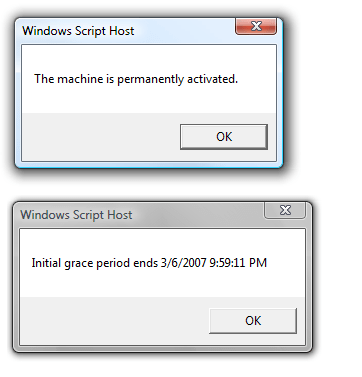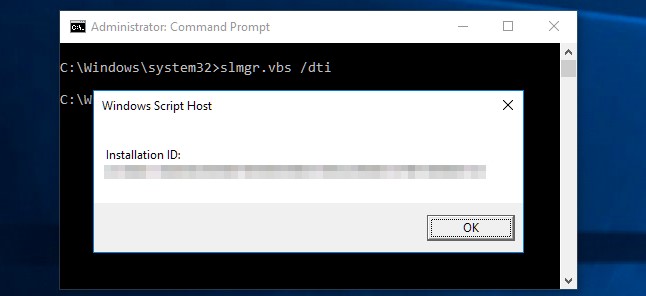

- #Slmgr vbs output to file how to
- #Slmgr vbs output to file license key
- #Slmgr vbs output to file install
- #Slmgr vbs output to file update
- #Slmgr vbs output to file full

# $ErrorActionPreference = "Silentl圜ontinue"
#Slmgr vbs output to file install
In this example I create a Windows 10 image with the latest VMware Tools installed, the installation of the Evergreen module, and automatically install the latest Windows updates. With Packer, the vmware-iso builder is used for creating images with VMware Workstation/Fusion.
#Slmgr vbs output to file how to
In this blog post, I show how to build a Windows 10 image with Packer and VMware Workstation. For building Windows 10 images with Packer and using VMware Workstation there is not much information available. But sometimes it’s useful to use VMware Workstation for local testing purposes.
#Slmgr vbs output to file update
Once a year it’s just a smart move to come together, update know-how, learn about security and mitigations, and bring home fresh ideas and authoritative guidance.Most of the time I use Packer against a VMware vSphere and Microsoft Azure environment.

#Slmgr vbs output to file full
Registration is open at and the full 3-track 4-days agenda becomes available soon. But there’s one place you don’t want to miss: PowerShell Conference EU - with 40 renown international speakers including PowerShell team members and MVPs, plus 350 professional and creative PowerShell scripters. – PowerShell Conference EU 2019 – June 4-7, Hannover Germany – visit There aren’t too many trainings around for experienced PowerShell scripters where you really still learn something new. Get-Command is an easy way of finding the complete (absolute) paths of files that reside in one of the system folders (listed in $env:PATH).To receive results, run it with cscript.exe, and provide the complete (absolute) path to slmgr.vbs. When you call it with “/?”, you get help for its command parameters. Windows license management is often done via slmgr.vbs, a VBScript.Since the slmgr.vbs script can do a lot of magic license tasks, as you can see when you open its help, let’s examine the source code in our upcoming text, and get to the information directly, bypassing the old VBScript. This is not a very sophisticated way of getting license and activation info. $Data contains ugly plain text, though, and it is localized, too. PS> Get-Command slmgr.vbs | Select-Object -ExpandProperty SourceĪnd this code reads the information into the PowerShell console: $Path = Get-Command slmgr.vbs | Select-Object -ExpandProperty Source $Data = cscript.exe // Nologo $Path /dlv $Data This is how you know where the VBScript is located: You could change the default VBS host to cscript.exe, but a nicer way without touching global settings is this: find out the complete path for the VBScript, then run it with this absolute path. Script file "C:\Users\tobwe\slmgr.vbs" not found. Microsoft (R) Windows Script Host, Version 5.812Ĭopyright (C) Microsoft Corporation. Displaying the information in a dialog window is useless for PowerShell and automation, however when you try and run the VBScript via cscript.exe, this may fail: This opens a separate window, and displays many license activation details.

To read all of your license settings, for example, try this: This command is actually an ancient VBScript.
#Slmgr vbs output to file license key
Most automated license key management tasks are done via a command called slmgr.


 0 kommentar(er)
0 kommentar(er)
